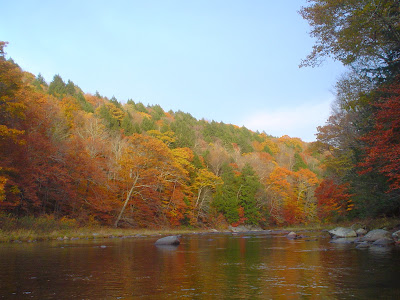Repeated encounters with a specific prey item allows the trout to form its ‘searching image’. Things that fit the trout’s searching image, more or less, almost always get a look. The natural emerger struggling at the surface, with part of its body and shuck penetrating the surface film, is spotted sooner and at longer range than the dun or spinner.
A semi-sunk fly projects more visible stimulus than a high and dry pattern, so it makes a lot of sense to use a design that penetrates the surface film as a ‘searching pattern’, rather than the high-riding flies usually recommended for this job like the Royal Wulff, Humpy or Elk Hair Caddis. For me, the old dry hackle jobs have been moved well down the bench, even for fast broken water. Bob Wyatt
I still get questions on what I use for creating soft hackle flies. Some answers are easy such as PARTRIDGE and orange, some are not so easy. I have four main feathers to create my favorite fly and a few tricks that I use at the vise.
In front of you are five feathers from four different species of bird. From the left to the right:
Partridge - (first from left). This is that beautiful brown toned, mottled feather from the back of the bird. It is the main ingredient in most of my flies that start with the words partridge or grouse. It has that perfect nymph color. A word of note: Always tie in your hackles by the tip and not the base of the feather. You don't need that thick stem on the fly plus the finished fly just looks better. Another word of note: try to buy your feathers on the cape (skin). It's much less expensive in the long run and you get better sizes. And another word of note: When I say "on the cape" I don't mean Truro!!!
Grey Partridge - These light grey feathers come from the breast of the bird. For a long time I didn't use them that much until I began to color them with Sharpie pens to get the color I wanted. The feather above has been colored with a dark grey Sharpie on the right side to show you the contrast. Using a sharpie you can color them any color that you want. Just remember to do both sides. Brown works great.
Hen - I didn't like this feather until I realized that I was using the WRONG hen cape. Look for a cape that has the most narrow tips on its feathers (the one above shows this). This will give you access to the shortest hackle fibers for trout flies after two turns. Then (mostly) the hackle becomes too big for the fly. Two turns is good because hen hackle is wider and takes up more space than partridge.
Starling - This tiny beautiful hackle that works all the time especially on Autumn BWO hatches. The only problem is that it is always DARK but most of the Autumnal flies are darker anyway so use it. If you can tie a dozen of these without breaking the fragile stem you can consider yours a profession grade fly tyer!
Pheasant - The last feather and I don't really know what to do with it as hackle. The feathers are too big as are the fibers. It's a size 10 or larger feather.
What not to use - CDC sucks as a soft hackle regardless of the size of the fly. Those flimsy, feminine feathers get smashed around when you get a hit and if you get some slimy weeds attached those CDC fibers will melt away. There is so much more to use instead of that stuff.
One More Feather - One last partridge feather of note is the wing covert feather. It covers the top of the bird's wing, is a great brown shade and is mostly in smaller sizes. It's drawback is that it has a fairly thick light colored stem. Eliminate that problem with a good old brown sharpie.
I have thought of using pigeon feathers but I can't stop thinking of these urban birds as flying rats. If you want to skin one for me then I'll take it.
Pray for lots of rain!!
Ken










 DanT says it all!!!
DanT says it all!!!








